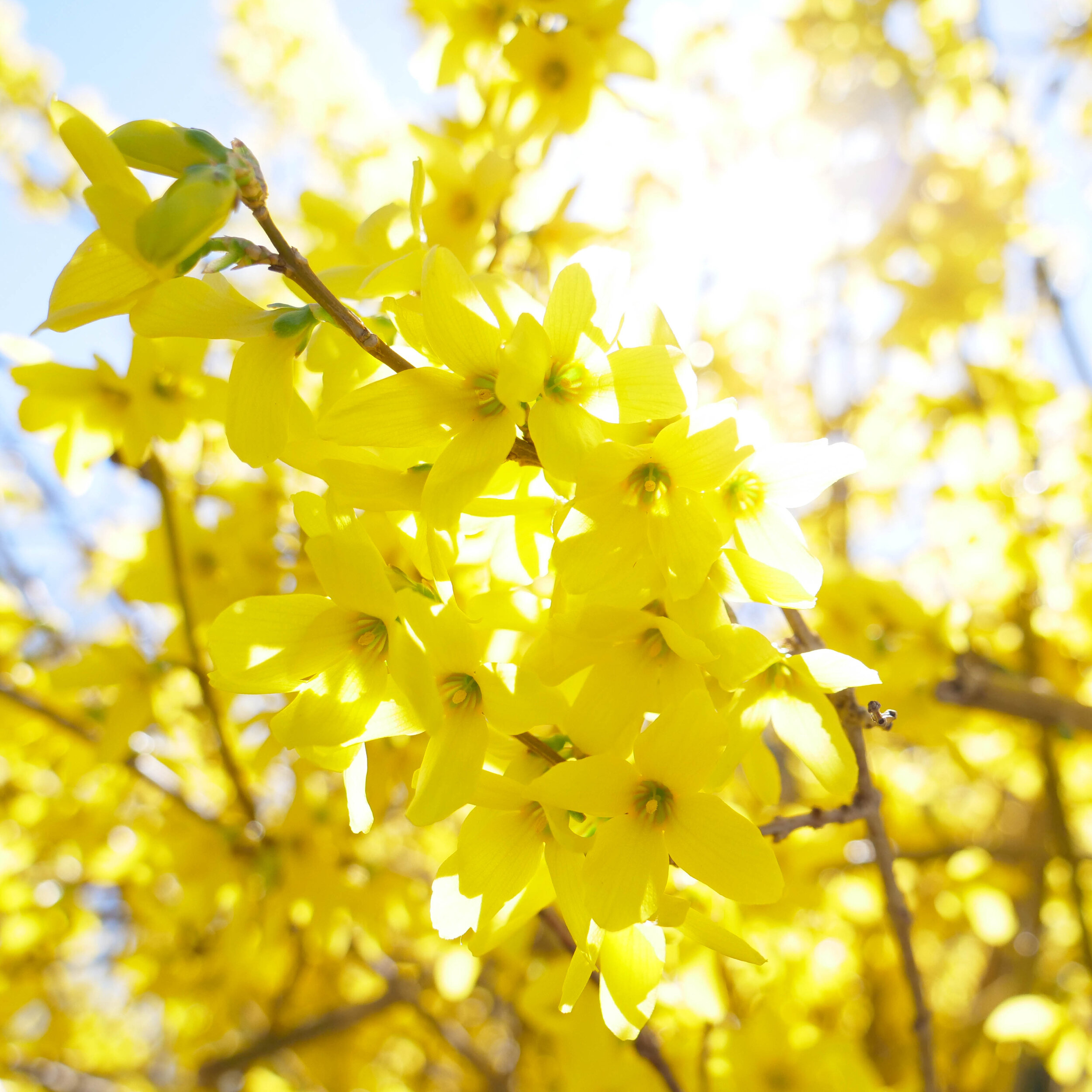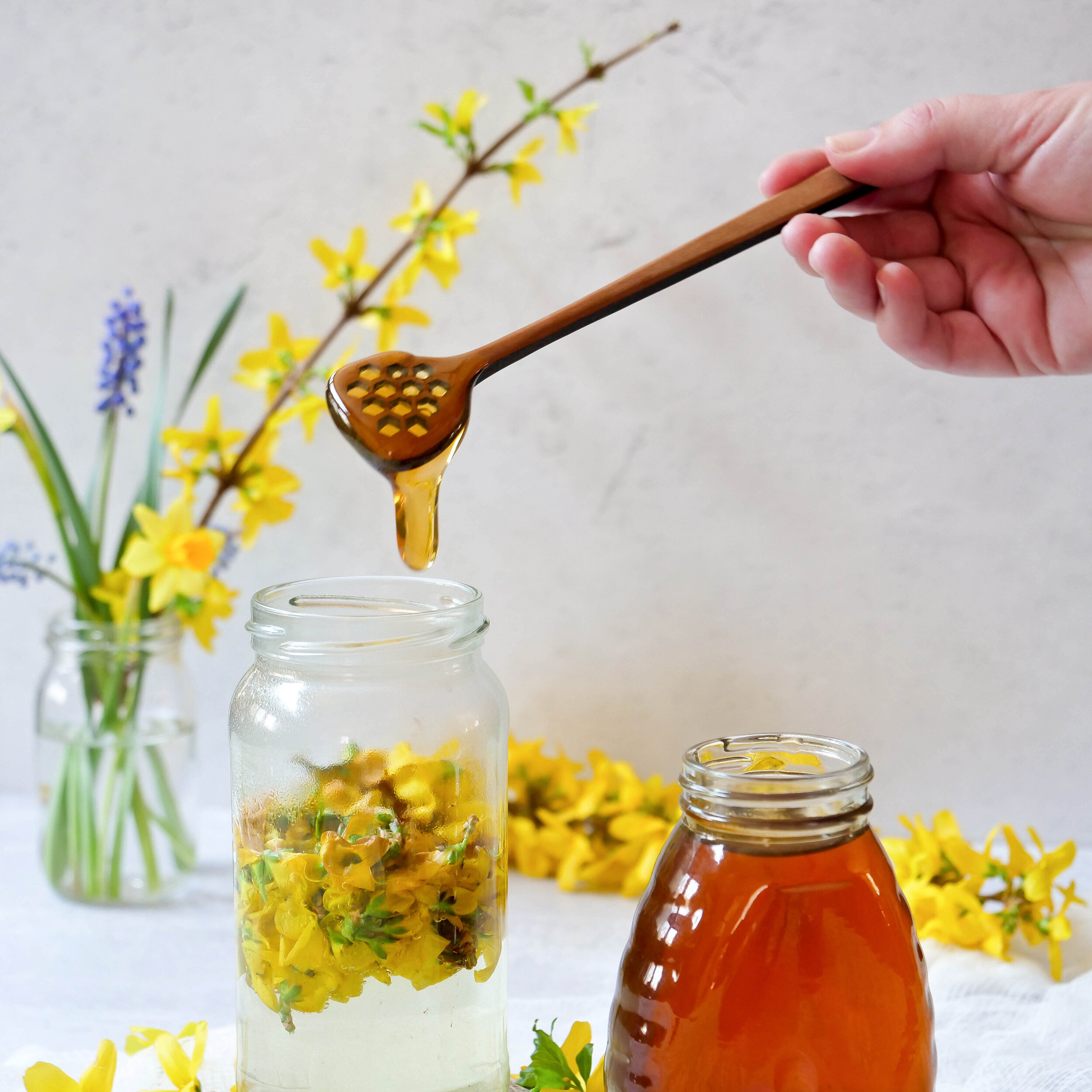Forsythia Syrup, a Spring DIY
by Alexandria Dickerson
Spring has sprung and so has the forsythia flowers! They are the first pop of color that meets you at eye level this time of year. Their sunshine yellow color brings warmth to the chilly spring days.
What better way to bring some cheer inside then to make forsythia syrup!
Forsythia syrup is a simple syrup made from the tea of fresh forsythia flowers. It’s light and sweet and can be enjoyed in hot drinks, on warm baked goods, or by the spoonful. It looks like sunshine and tastes like spring. Best made fresh, kept refrigerated, and enjoyed within 3-4 weeks after making it.
Forsythia is a fundamental herb in Traditional Chinese Medicine, where the fruit is used for its anti-inflammatory properties among many other medicinal properties. Its energetics are often described as bitter and cooling. Due to its anti-inflammatory properties, it’s often used to support the lungs and respiratory systems.
Read below for step by step directions on how to make forsythia syrup.
For this Spring DIY you will need the following supplies:
2 clean mason jars ( half pint size)
Fine mesh strainer
Spoon for mixing
1 cup forsythia flowers
1 cup boiling water
¾ cup raw honey
Directions:
1 . Collect 1 cup of forsythia flowers and place into a mason jar. The flowers should come off the stem easily and separate from the green stem.
2 . Boil 1 cup of water and pour over forsythia flowers into the mason jar. Set aside to steep and cool until room temperature or overnight.
3 . Strain the flowers from the mixture by placing your fine mesh strainer over the second clean mason jar and pouring the mixture into it.
4 . Mix in honey to taste for sweetness. Keep refrigerated and enjoy within 3-4 weeks.
*Foraging can be an exciting way to interact with nature and to source local and wild grown herbs and edibles. Always make sure you can positively identify exactly what you are foraging and preparing to consume. Check the foraging area for cleanliness and avoid areas that come in contact with animal waste, road runoff, and use of chemical sprays. Also, make sure you have permission to forage from property that does not directly belong to you. Lastly, don't forget to leave plenty behind for the birds and the bees. Happy foraging!
author bio:







